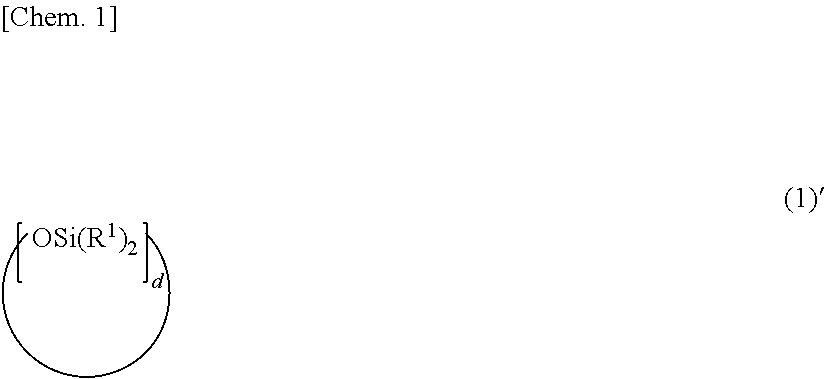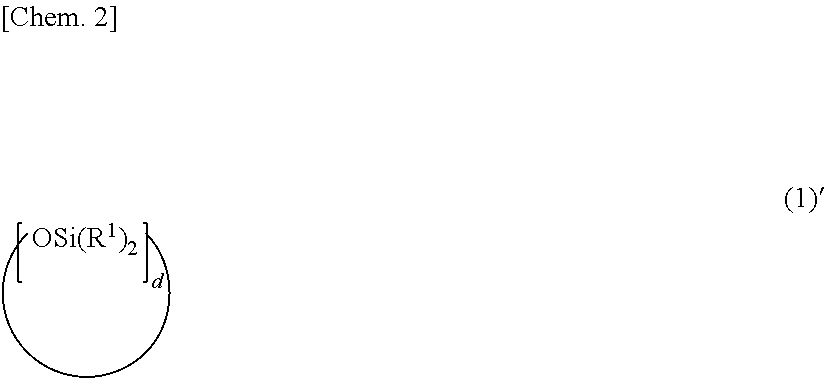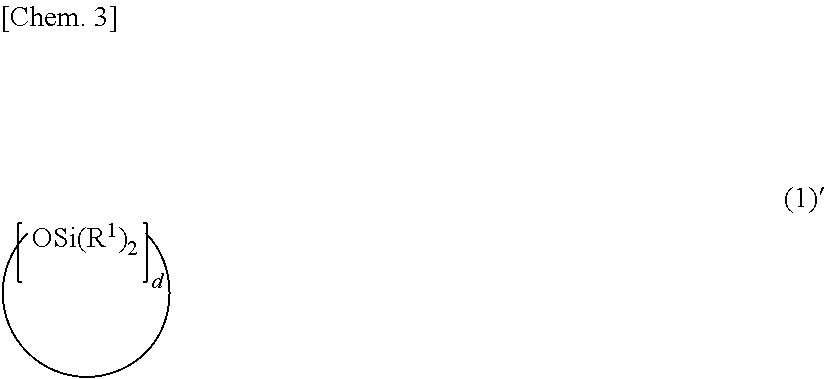Novel isocyanide compound and hydrosilylation reaction catalyst
a technology of isocyanide compound and reaction catalyst, which is applied in the direction of organic compound/hydride/coordination complex catalyst, physical/chemical process catalyst, organic chemistry, etc., can solve the problems of low selectivity of - and -adducts, side reaction due to internal rearrangement of olefin, and all the center metals pt, pd and rh are quite expensive noble metal elements, so as to facilitate hydrosilylation reaction
- Summary
- Abstract
- Description
- Claims
- Application Information
AI Technical Summary
Benefits of technology
Problems solved by technology
Method used
Image
Examples
example 1
[Example 1] Synthesis of Isocyanide L-1
[0275]The compound was synthesized by the following procedure while conducting N-formylation of an amine compound with reference to Org. Synth., 2013, 90, 358-366 and conversion of an N-formylated compound to isocyanide with reference to Organometallics, 2004, 23, 3976-3981.
[0276]A 300 mL flask was charged with 57.1 g (0.56 mol) of acetic anhydride and cooled to an internal temperature of 5° C. To the flask, 51.5 g (1.12 mol) of formic acid was added dropwise. The contents were stirred for 30 minutes with the flask kept cool, further stirred for 2 hours at an internal temperature of 40° C., and cooled to room temperature.
[0277]A 500 mL flask was charged with 106.0 g (0.30 mol) of 3-aminopropyl-tristrimethylsiloxysilane and 120.0 g of THF and cooled to an internal temperature of −15° C. The reaction solution prepared above was added dropwise to the flask at such a rate that the internal temperature might not exceed −5° C. After the completion of...
example 2
[Example 2] Synthesis of Isocyanide L-2
[0279]The compound was synthesized by the same procedure as in Example 1.
[0280]A 300 mL flask was charged with 26.5 g (0.26 mol) of acetic anhydride and cooled to an internal temperature of 5° C. To the flask, 23.9 g (0.52 mol) of formic acid was added dropwise. The contents were stirred for 30 minutes with the flask kept cool, further stirred for 2 hours at an internal temperature of 40° C., and cooled to room temperature.
[0281]A 500 mL flask was charged with 65.4 g (0.14 mol) of nBu(Me2)SiO(Me2SiO)3Si(Me2)CH2CH2CH2NH2 and 100.0 g of tetrahydrofuran and cooled to an internal temperature of −15° C. The reaction solution prepared above was added dropwise to the flask at such a rate that the internal temperature might not exceed −5° C. After the completion of dropwise addition, stirring was continued at −15° C. for a further 2 hours. Then the volatile was evaporated, obtaining 69.1 g of a N-formylated crude product.
[0282]A 1 L flask was charged w...
example 3
[Example 3] Synthesis of Isocyanide L-3
[0283]The compound was synthesized by the same procedure as in Example 1.
[0284]A 300 mL flask was charged with 57.1 g (0.56 mol) of acetic anhydride and cooled to an internal temperature of 5° C. To the flask, 51.5 g (1.12 mol) of formic acid was added dropwise. The contents were stirred for 30 minutes with the flask kept cool, further stirred for 2 hours at an internal temperature of 40° C., and cooled to room temperature.
[0285]A 500 mL flask was charged with 37.2 g (0.15 mol) of H2NCH2CH2CH2(Me2)SiOSi(Me2)CH2CH2CH2NH2 and 100.0 g of tetrahydrofuran and cooled to an internal temperature of −15° C. The reaction solution prepared above was added dropwise to the flask at such a rate that the internal temperature might not exceed −5° C. After the completion of dropwise addition, stirring was continued at −15° C. for a further 2 hours. Then the volatile was evaporated, obtaining 46.7 g of a N-formylated crude product.
[0286]A 2 L flask was charged w...
PUM
| Property | Measurement | Unit |
|---|---|---|
| temperature | aaaaa | aaaaa |
| Rh | aaaaa | aaaaa |
| reactivity | aaaaa | aaaaa |
Abstract
Description
Claims
Application Information
 Login to View More
Login to View More - R&D
- Intellectual Property
- Life Sciences
- Materials
- Tech Scout
- Unparalleled Data Quality
- Higher Quality Content
- 60% Fewer Hallucinations
Browse by: Latest US Patents, China's latest patents, Technical Efficacy Thesaurus, Application Domain, Technology Topic, Popular Technical Reports.
© 2025 PatSnap. All rights reserved.Legal|Privacy policy|Modern Slavery Act Transparency Statement|Sitemap|About US| Contact US: help@patsnap.com



